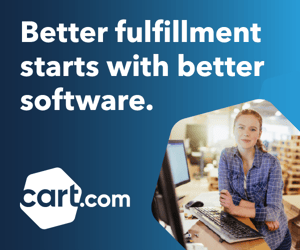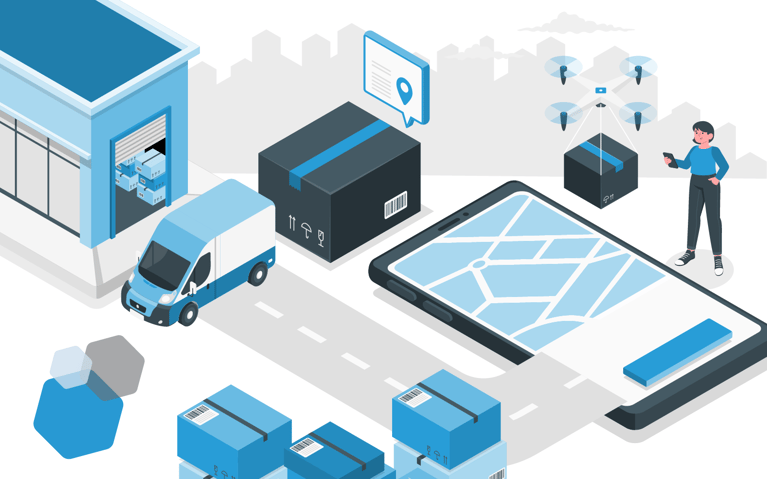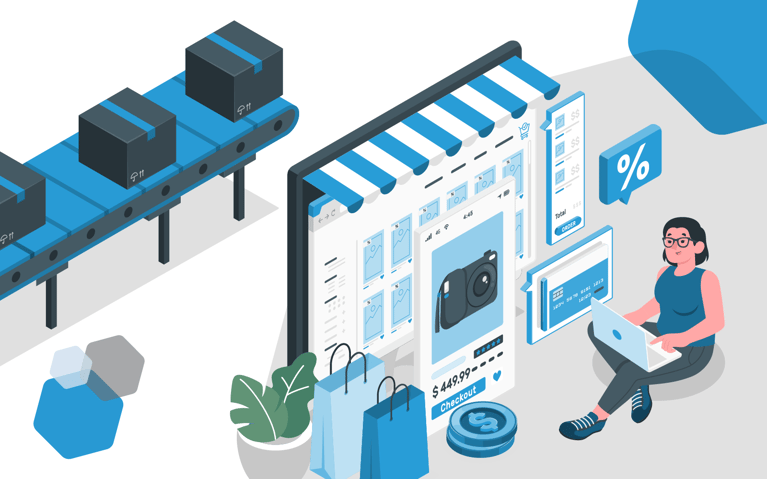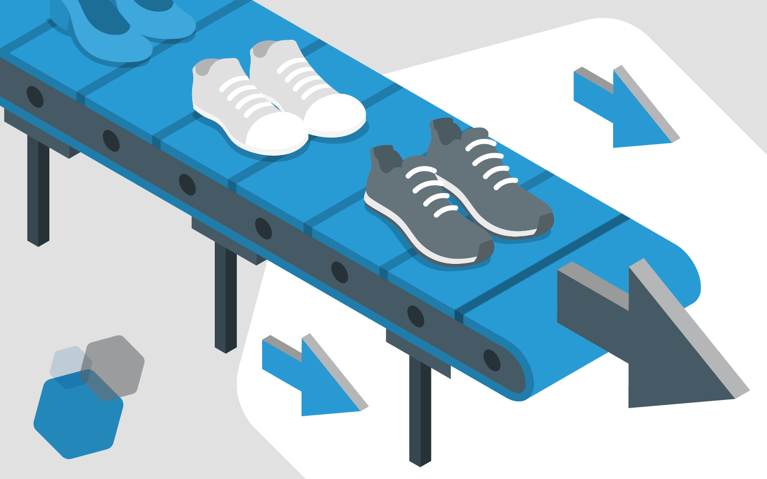Ecommerce often requires more than one fulfillment method. Retail operations are far more complex as brands sell in multiple channels. And because sellers are omnichannel – fulfillment must be as well. While one business model and order fulfillment method may work best for one channel, it may take a different method to get products into customers’ hands more quickly and conveniently. Because of this, it’s not uncommon for brands to use a hybrid fulfillment approach.
As you navigate your ecommerce operations, it’s important to understand how dropshipping, wholesale, BOPIS and other order fulfillment methods work and why they might be an excellent addition to your ecommerce fulfillment strategy.
Dropshipping
Dropshipping is a retail fulfillment method where a store doesn't keep the products it sells in stock. Instead, when a store sells a product, it purchases the item from a third party and has it shipped directly to the customer. This means the seller doesn't have to handle the product directly, making it an attractive option for those looking to start an ecommerce business with minimal upfront investment.
Dropshipping pros
One of the main advantages of dropshipping is its low barrier to entry. Since sellers don't need to invest in inventory upfront, they can start selling products with little to no capital. Dropshipping also allows brands to offer a wide range of products without needing storage space, making it easy to scale and expand product offerings.
Another benefit is the flexibility it offers in terms of location and time. Sellers can run their dropshipping businesses from anywhere with an internet connection, and since they don't need to handle inventory or shipping, they have more time to focus on other aspects of their business, such as marketing and customer service.
Dropshipping cons
Dropshipping also has its drawbacks. One of the main challenges is maintaining control over product quality and fulfillment. Since sellers rely on third-party suppliers to fulfill orders, they may face issues such as delayed shipping times, out-of-stock items or poor product quality, which can lead to negative customer experiences and damage the seller's reputation. Dropshipping profit margins tend to be lower compared to other ecommerce models. With the added costs of supplier fees, shipping fees and other expenses, sellers may find it challenging to make a significant profit.
What sales channels does dropshipping work well for?
Dropshipping works best for retail sales channels that prioritize convenience and a wide product selection. Online marketplaces like Amazon Marketplace are popular choices for dropshipping businesses due to their large customer bases and the ability to integrate with dropshipping platforms easily. Niche markets with specialized products can also be lucrative for dropshipping, as sellers can cater to specific customer needs without large inventory investments.
Wholesale
Wholesale fulfillment is a business model where merchants purchase goods in bulk directly from manufacturers or distributors at discounted rates and then resell them to consumers at a higher price, typically through retail stores or online platforms. This approach enables merchants to leverage economies of scale, obtaining products at lower prices per unit compared to buying individual units. When purchasing wholesale, merchants directly approach manufacturers and buy bulk items to secure a more favorable price per unit. This method is beneficial because the products are already branded and established, requiring minimal effort for merchants to list the items on their store and capitalize on existing reputations.
Pros
Wholesale fulfillment includes generous stock discounts, as purchasing in bulk often comes with significant price reductions. The more units merchants buy, the greater the discount, improving profit margins over time. Wholesale can also offer a branded experience since sellers have control over the order fulfillment process, allowing a customized unboxing experience that leaves a favorable impression on customers. Wholesale gives access to well-established brands and products that enhance credibility and attract new consumer segments.
Cons
Wholesale fulfillment also presents challenges. High minimum order quantities (MOQs) are common, requiring merchants to purchase large volumes of stock, sometimes exceeding 1000 units. This can strain cash flow for retailers with smaller order volumes, as they may struggle to sell these units within a narrow timeframe. Storing bulk inventory demands significant warehousing space and robust inventory management systems to prevent stock-outs, adding complexity and impacting profitability. Moreover, competition with other vendors can limit pricing flexibility and make it difficult to stand out in the market, as the price at which products can be sold is often controlled by wholesalers and competing retailers.
What sales channels does wholesale work well for?
Wholesale fulfillment is best suited for sales channels that prioritize a wide selection of established brands and products, such as online marketplaces. These platforms attract a large customer base and offer flexible selling options, making them popular choices for retailers looking to leverage wholesale fulfillment for their businesses.
BOPIS (Buy Online, Pick Up in Store)
BOPIS, or Buy Online, Pick Up in Store, is a retail fulfillment strategy where customers purchase items online and retrieve them in person from a physical store. This approach combines the convenience of online shopping with the immediacy of in-store pickup, offering customers greater flexibility and control over their shopping experience.
Pros
One main advantage of BOPIS is that it lets customers avoid shipping fees and delivery wait times while still enjoying the ease of online browsing and purchasing. BOPIS can also drive foot traffic to brick-and-mortar stores, providing retailers with additional opportunities for upselling and cross-selling. And because customers can inspect items before taking them home, BOPIS decreases the likelihood of order returns. Overall, BOPIS can save brands significant amounts on shipping costs.
Cons
BOPIS also presents some challenges. For example, coordinating inventory between online and physical store locations can be complex, leading to potential stockouts or discrepancies. It’s also imperative to create a seamless and efficient pickup process. This requires retailers to invest in robust logistics and store operations.
What sales channels does BOPIS work well for?
BOPIS is best suited for retailers with a strong omnichannel presence, particularly those with both online and physical store locations. This includes retailers in various sectors, such as apparel, electronics, home goods and more, who can leverage BOPIS to offer customers a flexible and convenient shopping experience across channels.
Pickup outlets
Pickup outlets are designated locations, often outside of traditional retail stores, where customers can retrieve their online purchases. These outlets provide convenience for customers who prefer to pick up their orders in person rather than opting for home delivery.
Pros and cons
Pickup outlets are accessible and offer a convenient location for customers to collect their items without the need for shipping or waiting at home for deliveries. Pickup outlets can help retailers save on shipping costs and reduce the risk of failed deliveries or returns. However, setting up and maintaining pickup outlets requires investment in infrastructure and logistics.
What sales channels do pickup outlets work well for?
Pickup outlets work well for retailers with a strong omnichannel presence, particularly those with large customer bases and a need to offer flexible pickup options. Online marketplaces and retailers in sectors like electronics, groceries and apparel can benefit from pickup outlets as well. This option can enhance customer convenience and satisfaction.
Build a winning ecommerce fulfillment strategy today
Your customer preferences, needs and behaviors will determine what flexible and convenient fulfillment looks like for your brand. When developing an ecommerce fulfillment strategy, make it a goal to implement a range of fulfillment options. You’ll also want to continuously monitor and optimize your fulfillment operations to ensure efficiency, reliability and seamless customer experiences across all channels. To gain more insights into fulfillment options and how to create a strategy that works for your retail business, contact Cart.com today.
Subscribe to our emails for the latest industry insights!
By entering your email, you agree to receive marketing emails from Cart.com








